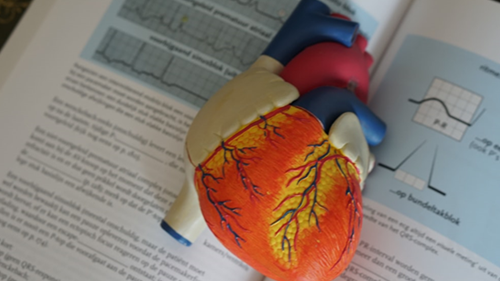Minimally Invasive Treatment
Minimally invasive treatment solutions become the direction of development
Minimally invasive treatment has many advantages in the cardiovascular field. Compared with open surgery, it has less trauma, less pain, and lower risk of complications, so it has been favored for many years. In the mid-1990s, minimally invasive treatment was gradually applied to the clinic. At that time, the first coronary artery and heart valve bypass operation was performed using the smallest wounds.
Thanks to the continuous advancement and development of cardiovascular medical equipment, minimally invasive surgery is favored by more and more doctors and patients. These advanced medical devices are the basis for minimally invasive surgery to become the preferred surgical option, because such operations are highly dependent on catheters and other professional medical equipment that enter the human body through small incisions for medical intervention, diagnosis and testing.
For example, the innovative smart balloon catheter system is equipped with electronic devices, sensors and other mechanical components. The design of such devices is still in the process of continuous adjustment, and strive to provide ablation treatment, blood flow data, blood data and electrical stimulation through a device.
In September 2020, a balloon catheter system was designed by a research team from Northwestern University and George Washington University. The system is equipped with a flexible, retractable electrode actuator and sensor matrix, as well as pressure and temperature sensors. They are often used for minimally invasive ablation or surgery to treat diseases such as arrhythmia.

Atrial fibrillation is not uncommon in patients with new crowns
The most common symptoms of new coronary pneumonia are flu-like dry cough, fever and body aches. Although the initial report focused on the effect of the disease on the respiratory tract, recent studies have begun to notice that 10-20% of hospitalized patients with new coronary disease have various heart-related complications, especially atrial fibrillation.
A study by researchers from the University of Pennsylvania showed that the probability of severe arrhythmia in patients with new coronary disease entering the ICU increased by 10 times, and atrial fibrillation accounted for almost 19-21% of all new coronary cases.
This fully shows that cardiovascular medical devices have become more and more important as the main treatment solution for heart-related diseases that occurred during the epidemic. Large companies such as Medtronic have been working hard to meet the demand for advanced cardiovascular equipment. Last month, the company announced the completion of the main process in the pulsed AF AFib treatment experiment.
The purpose of this research device exemption (IDE) experiment is to examine the PulseSelect PFA (pulse field ablation) device that uses pulsed electric fields to treat atrial fibrillation. Cardiologists at Ohio State University Wexner Medical Center used the system for the first operation in the United States in February 2021. Since then, 13 more patients have successfully undergone the operation worldwide.
The preliminary results of the experimental pulse AF study were published in Heart Rhythm Society 2020 Science. The AF seminar earlier this year presented more evidence showing that the acute effective rate was 100%, and the experimental patients treated with PulseSelect did not have equipment or procedures. Related questions.
Precision and innovative cardiac ablation equipment
Over the years, with the increasing burden of cardiovascular diseases on global medical care, the application of advanced treatment technologies will greatly increase, and the cardiovascular device industry will usher in rapid profitable growth in the future.
Cardiac ablation devices will account for nearly 72% of the cardiovascular device market in 2020, and GMI predicts that its development will accelerate in the future. The rising incidence of atrial fibrillation is the main reason for the increasing popularity of such devices. These products meet the growing demand for minimally invasive ablation and cardiac ablation equipment technological innovation.
For example, in June 2020, Boston Scientific introduced DIRECTSENSE technology to the United States, which is a tool for monitoring the effects of radiofrequency energy during cardiac ablation procedures. DIRECTSENSE was approved by the FDA in April 2020. It is the only tool that can track the resistance or local impedance fluctuations around the tip of the INTELLANAV MiFi Open-Irrigated (OI) ablation catheter, providing more for doctors to evaluate the treatment effect during ablation surgery. s solution.
The significant enhancement of the cardiovascular device market depends on a key factor-the risk of CVD and related health problems is now receiving attention on a larger scale. This is because the Internet, private hospital heart projects and public awareness programs of government agencies such as CDC have strengthened public health awareness. Consumers are beginning to be wary of the symptoms of heart disease and require early diagnosis and treatment. The rapid expansion of the elderly population will undoubtedly increase the potential of the medical device field.

